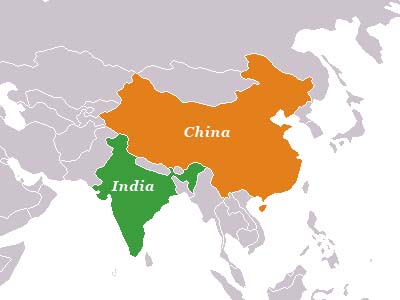Lankan Ranger
ELITE MEMBER

- Joined
- Aug 9, 2009
- Messages
- 12,550
- Reaction score
- 0
Indian President Starts 6 Day China Visit
Indian President Pratibha Patil arrived here Wednesday, kicking off her six-day state visit to China.
During Patil's stay in Beijing, Chinese President Hu Jintao, Chairman of the National People's Congress Standing Committee Wu Bangguo, Premier Wen Jiabao, and Jia Qinglin, chairman of the National Committee of the Chinese People's Political Consultative Conference will hold talks or meet with her respectively.
Patil will also attend a reception marking the 60th anniversary of China-Indian diplomatic ties with Chinese Vice President Xi Jinping.
Besides Beijing, Patil will visit the pavilions of the Shanghai World Expo and go to Luoyang of central China's Henan Province, where she will attend the inauguration ceremony of a buddhist building of Indian style in the White Horse Temple, a famous temple in China.
Patil's visit is the first one by the head of state of India to China in recent ten years.
In an exclusive interview with Xinhua Tuesday, Patil said she was looking forward to visiting China and holding discussions with the Chinese leaders.
The president said that India and China are two large and populous developing countries and both of them focus on economic growth and social progress, so there are many areas in which the two countries can exchange views and learn from each other.
Indian president starts China visit - People's Daily Online
Indian President Pratibha Patil arrived here Wednesday, kicking off her six-day state visit to China.
During Patil's stay in Beijing, Chinese President Hu Jintao, Chairman of the National People's Congress Standing Committee Wu Bangguo, Premier Wen Jiabao, and Jia Qinglin, chairman of the National Committee of the Chinese People's Political Consultative Conference will hold talks or meet with her respectively.
Patil will also attend a reception marking the 60th anniversary of China-Indian diplomatic ties with Chinese Vice President Xi Jinping.
Besides Beijing, Patil will visit the pavilions of the Shanghai World Expo and go to Luoyang of central China's Henan Province, where she will attend the inauguration ceremony of a buddhist building of Indian style in the White Horse Temple, a famous temple in China.
Patil's visit is the first one by the head of state of India to China in recent ten years.
In an exclusive interview with Xinhua Tuesday, Patil said she was looking forward to visiting China and holding discussions with the Chinese leaders.
The president said that India and China are two large and populous developing countries and both of them focus on economic growth and social progress, so there are many areas in which the two countries can exchange views and learn from each other.
Indian president starts China visit - People's Daily Online










